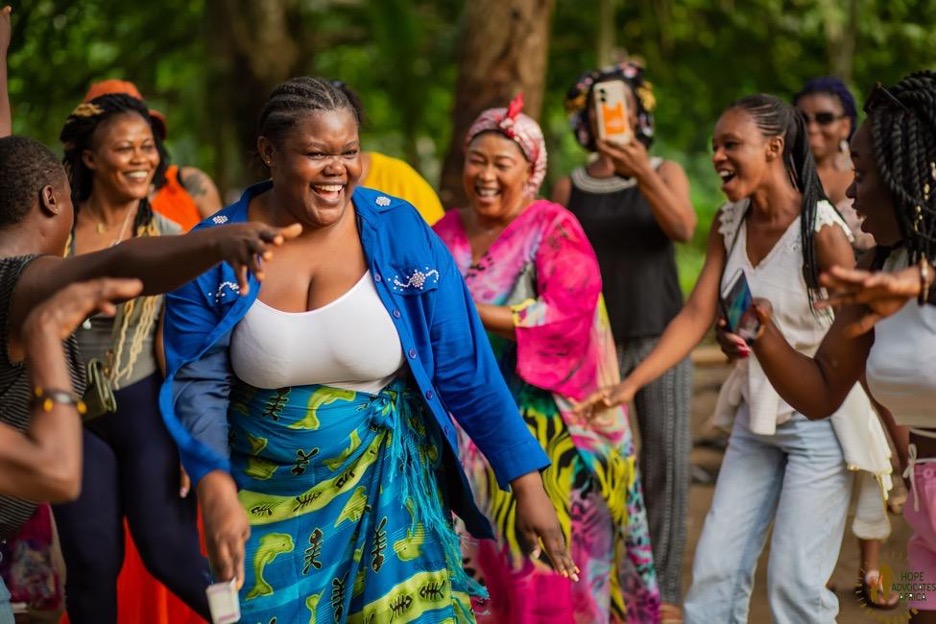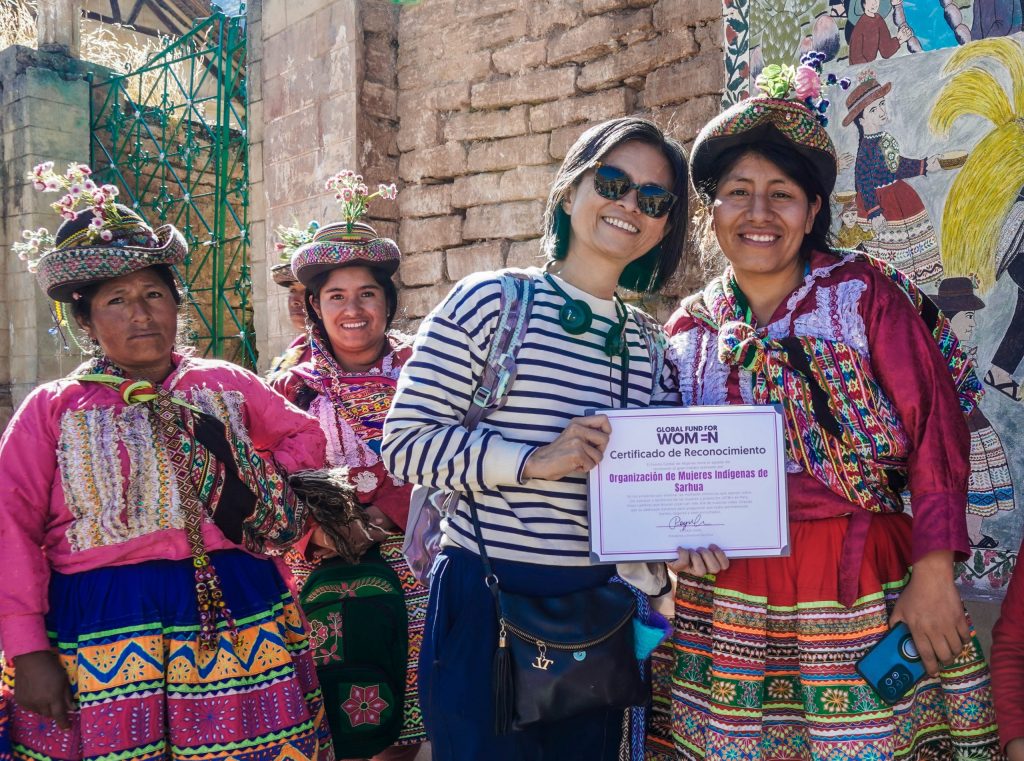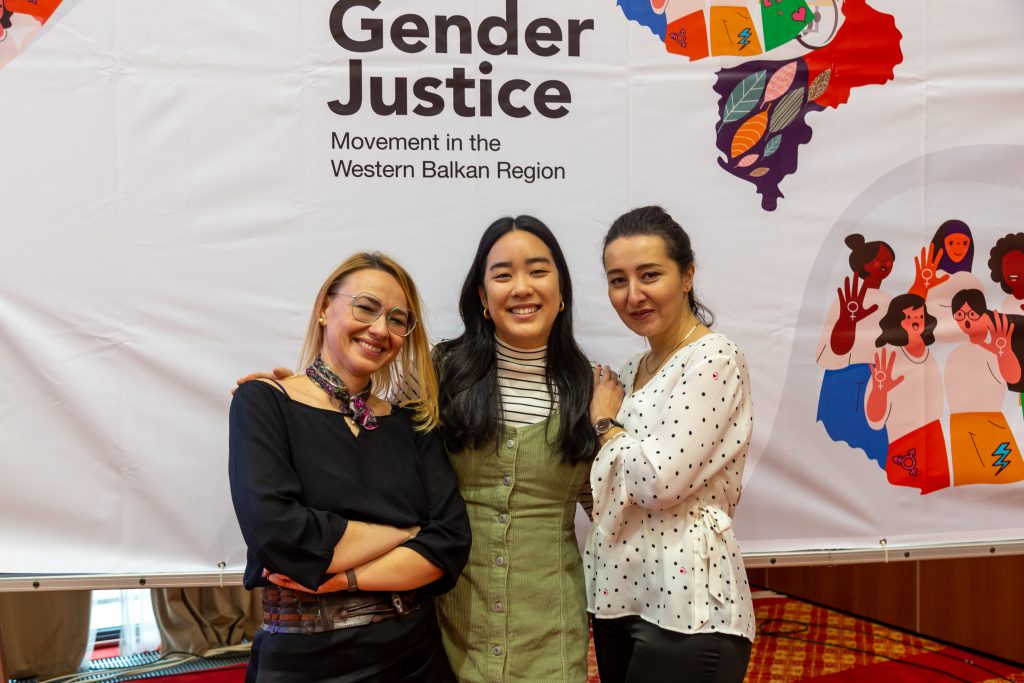by Global Fund for Women's Adolescent Girls Advisory Council
Investing in Transformation: 5 Lessons in Resourcing Young Feminists
“When you trust girls to lead and decide, you’re not just donating. You’re investing in transformation, one girl, one voice, one heartbeat at a time.”Global Fund for Women Adolescent Girls Advisory Council member, 2025
Across the globe, wherever there are movements for gender justice, girls and gender- expansive young people are leading the way. They are creating climate-just futures, working to end period poverty, and fighting for education for everyone. And they are winning!
Over the last four years, Global Fund for Women’s Adolescent Girls Advisory Council (AGAC) has played a central role in how Global Fund for Women distributes funds and resources to gender justice movements and young people worldwide. From grantmaking to strategic planning, the 12 girls from 12 countries on our Adolescent Girls Advisory Council have redefined what resourcing intersectional and intergenerational movements looks like. They are reminding us that when girls lead, movements thrive.
Here are five lessons from AGAC on what it takes to truly resource young feminist movements:
I. Fund for lasting change: large, flexible, long-term grants
Young feminist organizers are frequently underfunded and underestimated. There’s a persistent assumption in philanthropy that youth-led groups cannot absorb large grants. The opposite is often true: flexible, long-term funding is exactly what allows groups to build capacity, deepen their organizing, and grow sustainably. At Global Fund for Women, youth-led organizations are resourced at the same levels as other movement partners—because transformative work demands transformative investment.
“At first, granting a $20,000 grant seemed like a lot of money, especially considering that the organizations I’ve led have only received up to $1,000 in funding. But this grantmaking process made me realize that, to create long-lasting change, we actually do need that amount, and more. This grant was a big push for many organizations that barely had any funding, allowing projects to be meaningfully developed and keep the organizations growing.” – AGAC member about funding youth organizing on sexual and reproductive justice.
II. Make applications accessible and creative
Many grantmaking processes still prioritize English fluency and traditional proposal formats over clarity of vision and local relevance. To resource and meet girls in their full complexity, funders can expand the ways they ask grantees for their stories—through video, audio, and formats that center context and experience. Doing so invites deeper understanding and makes space for girl-centered genius.
“When funding projects from the Global South, writing—especially formal or academic writing—is definitely a privilege. That’s why I think it would have been ideal to allow applicants to submit their proposals in different formats, like videos or other creative forms. That way, we could evaluate them more holistically and with greater empathy and context.” – AGAC member
III. Fund movements by girls, not just for them
There is a difference between girl-centered and girl-led. At Global Fund for Women, we have adapted our applications (as recommended by our AGAC) to learn specifically about girl-led decision making in organizational structures. We believe that lasting change happens when agendas are set by communities most impacted themselves, and this includes girls. We know that investing in girl-led movements supports the longevity and sustainability of feminist movements.
“A young feminist-led group is driven and guided by those with lived experiences. They bring unique perspectives, insights, and urgency to the issues they face, which can result in more authentic, relevant, and innovative solutions.” – AGAC member “Funding youth-led groups reinforces the principle of youth autonomy and respects their ability to lead movements and design strategies that affect their own lives and communities.” – AGAC member
IV. Build bridges across generations
Young feminists don’t organize in isolation—they are part of a broader ecosystem of feminist resistance. As donors, it’s important to recognize existing hierarchies and create opportunities for intergenerational collaboration, support, and solidarity. One example of this is the participatory grantmaking process between Global Fund for Women’s Adolescent Girls Advisory Council and Movement for East Africa Abortion Rights. In this collaboration, the East Africa Movement allocated $100,000 of their annual budget to AGAC, which then implemented their own girl-led review and grantmaking process to fund 5 young feminist groups working on sexual and reproductive justice and safe abortion.
“I prioritized the leadership structure of organization when reviewing grant applications, and paid close attention if girls were genuinely centered in decision making.” – AGAC member
“Centering girls in grantmaking is not a favor, it’s a necessity. Girls are already organizing, leading, and shaping their communities. What we lack is access to funding, safety, and platforms that respect us as experts of our own experiences.” – AGAC member
“Grantmaking that centers girls is more innovative, more intersectional, and more sustainable. Let girls lead from where we stand, not after we’ve aged into someone else’s idea of leadership.” - AGAC member
V. Trust young feminists as experts and invest in intergenerational power
Too often, leadership is defined by credentials such as degrees, titles, or proximity to institutions, rather than by lived experience and community trust. But transformative leadership is built differently. When adolescent girls and young feminists are trusted with real power, they bring collaborative, care-rooted approaches that shift what leadership can look like.
“Power can be collaborative, not hierarchical, and trust is built when each voice is heard and valued. I’ve seen how girls from different countries and backgrounds can lead with strength, compassion, and clarity. AGAC taught me that when we trust young people with real responsibility, we create space for transformative leadership rooted in lived experience, not just credentials.” - AGAC member


